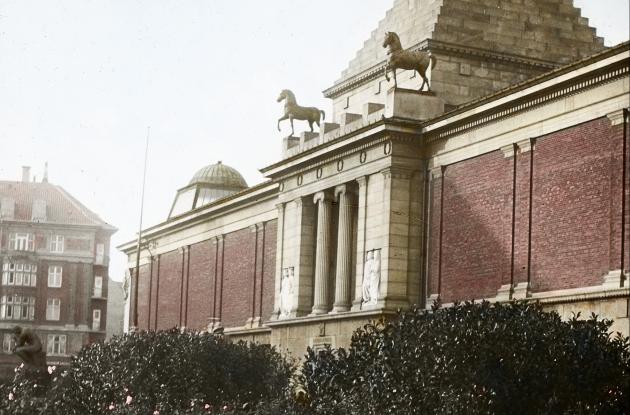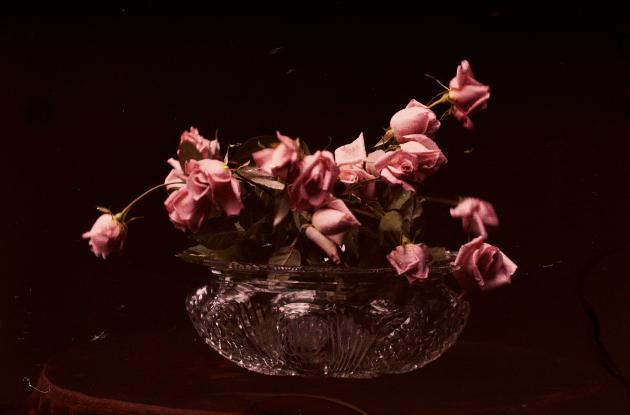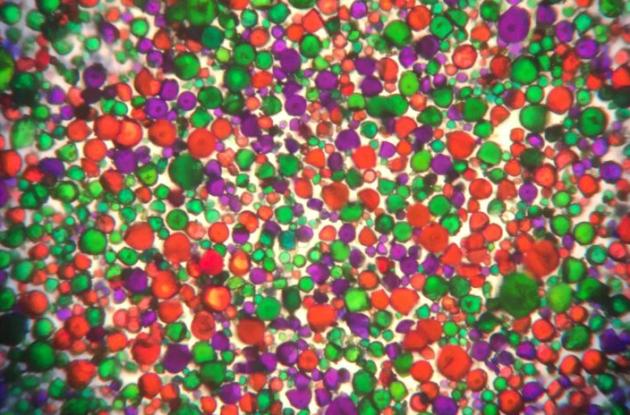The world in colour
Julie Laurberg was one of the first in the country to take colour photographs. She had gotten the plates from the Lumière brothers in Paris
Julie Laurberg was not only a pioneer in the field of film. She was among the first in Denmark to produce colour photography, the so-called autochromes. There were three colour grains on the plate, red, green and blue, and this resulted in some very beautiful images on glass. It was the Lumière brothers in Paris who put the plates into production in 1907. They were difficult to get hold of, and it is surprising in itself that Laurberg succeeded.

Photo: Laurberg og Gad
As early as 1907, the newspaper "København" could tell that she was working on the new technique. On August 6, the journalist wrote that Laurberg had photographed two ladies at a table and some vases with flowers of all colours.
Surely it must be regarded as a testimony to the contemporary beautiful position of the art of photography in this country that one of the first to come out is such an excellent picture as that, Ms. Laurberg has taken.
Two days later "Nationaltidende" followed up with a longer article about colour photography or "photochromy", as it was called. Here, the journalist called Laurberg's pictures "little glass paintings" and wrote about how the women have had to sit still for two minutes. Some time had to pass before snapshots in colour could be taken. There is no mention of roses in a vase, so the beautiful picture may have been taken later.

Photo: Laurberg og Gad
Photographs were not considered art, but there was great interest in the medium as a new technical phenomenon. There were large rooms with photographs at the Nordic Industrial, Agricultural and Art Exhibition in 1888, and Julie Laurberg exhibited here. There was also great enthusiasm for new achievements in photography at the World's Fairs of the time, which were a celebration of industry and technology. It was something Danish photographers followed, and many of them exhibited their pictures. Julie Laurberg thus took photographs to the World Exhibition in Paris in 1900. Here Julie Laurberg even received a medal for her work.

Photo: Laurberg og Gad
Laurberg and Gad in Digital collections
Royal Danish Library has a collection of 4,400 negatives by Julie Laurberg and Franziska Gad. It has been digitised and made available in Digital Collections. Here you can also find many paper images, both portraits and architectural images, from Laurberg and Gad's studio.
